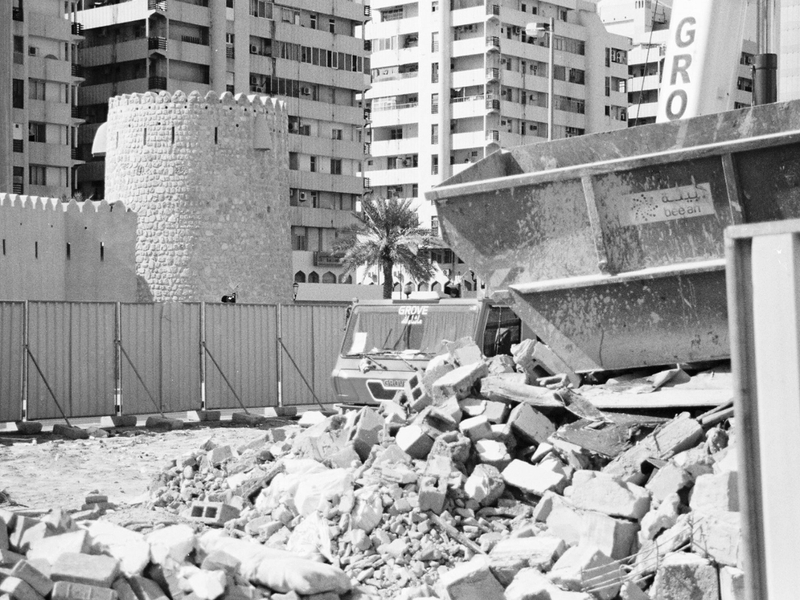The past exists in the present as a complex web of intertwined realities. To inhabit contemporary ruins is to urgently reconsider how we occupy and interact with urban spaces. Equally pressing as the need to create sustainable solutions is the recognition of when not to build or demolish at all. One of today’s most significant architectural challenges is adapting existing buildings to meet new demands.
“Time Transitions” is an intervention located at the entrance of the Old Al Jubail Vegetable Market in Sharjah that restores the view from the passively-cooled old market to the waterfront, lost after the construction of a new, air-conditioned market across the street. Inspired by the wind towers — a regional vernacular cooling architectural element — the project marks the location of the old market in the urban landscape and symbolizes fresh air for an architecture recently abandoned, now inhabited again.
To achieve balance between the ground and sky, blocks of demolition waste collected near the market are incorporated into the structure, elevated to the status of archaeological artefacts.
Easily assembled and dismantled, the scaffolding tower serves as a cogent symbol of impermanence and the need for adaptation. It is an invitation to reflect on the significance of an architecture of regeneration that values cultural traditions, and the promotion of policies to reintegrate disused urban spaces into the city's fabric.
“Time Transitions” intends to evoke reflection on the epistemology of architecture and to suggest that material and immaterial ruins play a fundamental role in rethinking our possible futures in a dystopian present.
